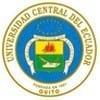Presence and diversity of Salmonella isolated from layer farms in central Ecuador
Background: Given the considerable role played by Salmonella in the incidence of food contamination, around the world, surveillance of this infection is prioritized by both food producers and health care authorities. Data remains insufficient concerning the prevalence of Salmonella in poultry systems in Ecuador and in Latin America in general.
Methods: In this study, we evaluated the presence and diversity of Salmonella serovars in samples taken from 21 layer farms and backyard layers in central Ecuador during August-November 2017. Salmonella was isolated following standardized methods (ISO 6579) and the serovar determination was carried out by PCR.
Results: A significant presence of Salmonella was detected in the 21 farms evaluated, with a frequency of 76% (95% confidence interval (CI): 53-92) in environmental surfaces, 33% (95%CI: 15-57) in pooled cloacal swabs from layer hens, 33% (95% CI: 13–59) on feed samples, and 10% (95%CI: 1-30) in backyard layer feces from traditional local markets. The dominant serovars detected were S. Infantis and S. Typhimurium.
Conclusions: This study forms a basis for further surveillance of Salmonella serovars in layer farms in central Ecuador.
Keywords Salmonella, Layer Poultry, Ecuador, Serovars.
Introduction
Methods
Samples
Detection of Salmonella
Serovar determination by PCR

Results
Assessing the presence of Salmonella
Determining presence of serovars


Discussion
Agron PG, Walker RL, Kinde H, et al.: Identification by subtractive hybridization of sequences specific for Salmonella enterica serovar enteritidis. Appl Environ Microbiol. 2001; 67(11): 4984–4991.
Alexandre SM, Pozo MC, González GV, et al.: Detección de Salmonella enteritidis en muestras de productos avícolas de consumo humano en la Región Metropolitana. Revista Médica de Chile. 2000; 128(10): 1075–1083.
Anderson TC, Nguyen TA, Adams JK, et al.: Multistate outbreak of human Salmonella Typhimurium infections linked to live poultry from agricultural feed stores and mail-order hatcheries, United States 2013. One Health. 2016; 2: 144–149.
Andino A, Pendleton S, Zhang N, et al.: Survival of Salmonella enterica in poultry feed is strain dependent. Poult Sci. 2014; 93(2): 441–447.
Antunes P, Mourão J, Campos J, et al.: Salmonellosis: the role of poultry meat. Clin Microbiol Infect. 2016; 22(2): 110–121.
Bäumler AJ, Hargis BM, Tsolis RM: Tracing the origins of Salmonella outbreaks. Science. 2000; 287(5450): 50–52.
Behravesh CB, Brinson D, Hopkins BA, et al.: Backyard poultry flocks and salmonellosis: a recurring, yet preventable public health challenge. Clin Infect Dis. 2014; 58(10): 1432–1438.
Callejón RM, Rodríguez-Naranjo MI, Ubeda C, et al.: Reported foodborne outbreaks due to fresh produce in the United States and European Union: trends and causes. Foodborne Pathog Dis. 2015; 12(1): 32–38.
Calero-Cáceres W: Dataset 1. Origin, biochemical tests, PCR results and serovar of Salmonella isolates. figshare. Dataset. 2019a.
Calero-Cáceres W: Dataset 2. PCR results of bcfC, fliC and M.SinI genes. figshare. Figure. 2019b.
Calero-Cáceres W: Supplementary figure 1. figshare. Figure. 2019c.
CDC: Salmonella Atlas. Reports and Publications. Salmonella. CDC [Online]. [Accessed: 7 February 2019]. 2018.
Davies RH, Wray C: Distribution of Salmonella contamination in ten animal feedmills. Vet Microbiol. 1997; 57(2–3): 159–169.
Donado-Godoy P, Gardner I, Byrne BA, et al.: Prevalence, risk factors, and antimicrobial resistance profiles of Salmonella from commercial broiler farms in two important poultry-producing regions of Colombia. J Food Prot. 2012; 75(5): 874–883.
EFSA: EU Summary Report on antimicrobial resistance in zoonotic and indicator bacteria from humans, animals and food in 2013. [Online]. [Accessed: 7 February 2019]. 2013.
Fink-Gremmels J: Animal feed contamination: effects on livestock and food safety. 2012.
Foley SL, Lynne AM: Food animal-associated Salmonella challenges: pathogenicity and antimicrobial resistance. J Anim Sci. 2008; 86(14 Suppl): E173–87.
Foley SL, Nayak R, Hanning IB, et al.: Population dynamics of Salmonella enterica serotypes in commercial egg and poultry production. Appl Environ Microbiol. 2011; 77(13): 4273–4279.
Hendriksen RS, Vieira AR, Karlsmose S, et al.: Global monitoring of Salmonella serovar distribution from the World Health Organization Global Foodborne Infections Network Country Data Bank: results of quality assured laboratories from 2001 to 2007. Foodborne Pathog Dis. 2011; 8(8): 887–900.
Huss A, Cochrane R, Muckey M, et al.: Animal Feed Mill Biosecurity: Prevention of Biological Hazards. In Food and feed safety systems and analysis. Elsevier, 2018; 63–81.
ISO: ISO 6579-1:2017 - Microbiology of the food chain -- Horizontal method for the detection, enumeration and serotyping of Salmonella -- Part 1: Detection of Salmonella spp. International Organization for Standardization. 2017.
Issenhuth-Jeanjean S, Roggentin P, Mikoleit M, et al.: Supplement 2008-2010 (no. 48) to the White-Kauffmann-Le Minor scheme. Res Microbiol. 2014; 165(7): 526–530.
Jones FT: A review of practical Salmonella control measures in animal feed. J Appl Poult Res. 2011; 20(1): 102–113.
Laban SE, Moustafa GZ, Anwer W, et al.: Microbial Load of Poultry By-Products Following Rendering Process. Global Veterinaria. 2014; 12: 756–759.
Majowicz SE, Musto J, Scallan E, et al.: The global burden of nontyphoidal Salmonella gastroenteritis. Clin Infect Dis. 2010; 50(6): 882–889.
MSP: Gaceta Epidemiológica Ecuador SIVE-ALERTA – Ministerio de Salud Pública. [Online]. [Accessed: 6 February 2019]. 2018.
Muniesa M, Blanco JE, De Simón M, et al.: Diversity of stx2 converting bacteriophages induced from Shiga-toxin-producing Escherichia coli strains isolated from cattle. Microbiology. 2004; 150(Pt 9): 2959–2971.
Pugliese N, Circella E, Pazzani C, et al.: Validation of a seminested PCR approach for rapid detection of Salmonella enterica subsp. enterica serovar Gallinarum. J Microbiol Methods. 2011; 85(1): 22–27.
Pui CF, Wong WC, Chai LC, et al.: Simultaneous detection of Salmonella spp., Salmonella Typhi and Salmonella Typhimurium in sliced fruits using multiplex PCR. Food Control. 2011; 22(2): 337–342.
Ranjbar R, Mortazavi SM, Mehrabi Tavana A, et al.: Simultaneous Molecular Detection of Salmonella enterica Serovars Typhi, Enteritidis, Infantis, and Typhimurium. Iran J Public Health. 2017; 46(1): 103–111.
Thiennimitr P, Winter SE, Bäumler AJ: Salmonella, the host and its microbiota. Curr Opin Microbiol. 2012; 15(1): 108–114.
Varma JK, Greene KD, Ovitt J, et al.: Hospitalization and antimicrobial resistance in Salmonella outbreaks, 1984-2002. Emerg Infect Dis. 2005; 11(6): 943–946.
Villagómez Estrada S, Logacho Pilataxi M, Vinueza Burgos C: Presencia y Resistencia a los Antimicrobianos de serovariedades de Salmonella enterica aisladas en una empresa avícola integrada del Ecuador. Rev Ecuat Med Cienc Biol. 2017; 38(1).
Vinueza-Burgos C, Cevallos M, Ron-Garrido L, et al.: Prevalence and Diversity of Salmonella Serotypes in Ecuadorian Broilers at Slaughter Age. PLoS One. 2016; 11(7): e0159567
WHO: Salmonella. WHO. [Online]. [Accessed: 7 February 2019]. 2017.
Zhu Q, Lim CK, Chan YN: Detection of Salmonella typhi by polymerase chain reaction. J Appl Bacteriol. 1996; 80(3): 244–251.
Zhu C, Yue M, Rankin S, et al.: One-Step Identification of Five Prominent Chicken Salmonella Serovars and Biotypes. J Clin Microbiol. 2015; 53(12): 3881–3883.














